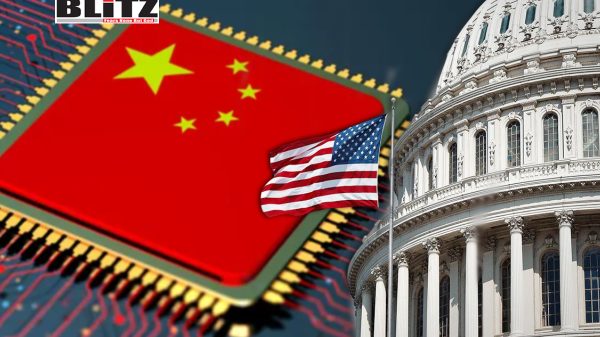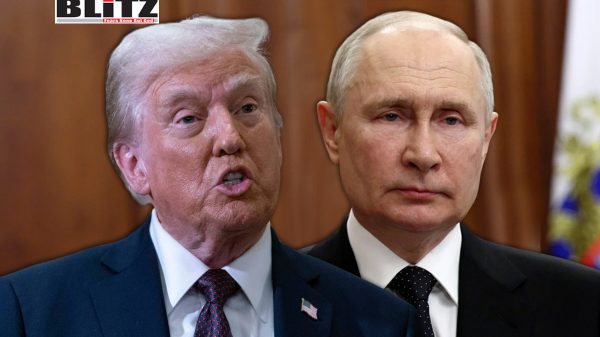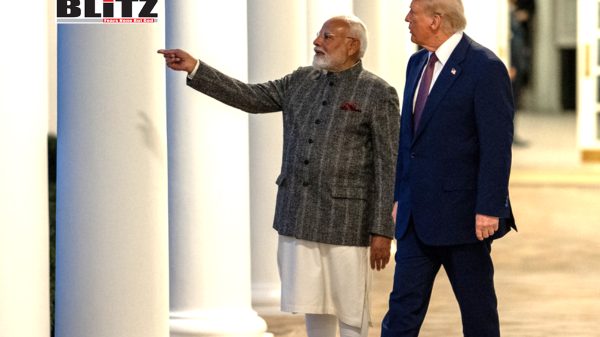China’s AI strategy challenges US dominance with open-source diplomacy and global governance ambitions
- Update Time : Thursday, August 14, 2025

Global artificial intelligence (AI) development has entered a decisive phase, one that is rapidly reshaping the balance of technological power. Since 2023, China has accelerated its AI outreach in ways that go far beyond domestic innovation, signaling its ambition to play a leading role in creating a new global digital order. This shift is not simply about competing with the United States in technology; it’s about redefining how AI is developed, governed, and shared internationally.
At the heart of China’s strategy lies a vision that blends cutting-edge technology, long-term state planning, and proactive diplomacy. AI is positioned not merely as a tool for industrial competitiveness but as a central pillar of modernization, social transformation, and global cooperation. Beijing’s approach stands in stark contrast to the US model, which remains focused on maintaining technological dominance through export restrictions, proprietary advantage, and competitive containment.
China’s AI ambitions are neither impulsive nor recent. In 2017, the Chinese government released the New Generation Artificial Intelligence Development Plan, a strategic roadmap to make the country the world’s AI leader by 2030. By then, the AI industry and related sectors are projected to reach a staggering $1.4 trillion in value.
This plan recognizes AI as the answer to key domestic challenges – from an aging population to slowing productivity growth – and as a driver for upgrading China’s economic model into a more advanced, innovation-driven stage. The foundation rests on four critical factors: abundant data, a growing and diversified energy supply, strong computing power, and a skilled workforce.
China already holds significant advantages in three of these areas. Its enormous population generates vast data resources; its energy sector continues to expand with heavy investment in renewables and diversified sources; and its labor force is particularly strong in science, technology, engineering, and mathematics. The weakest link – high-end computing hardware – remains a focal point of Western export controls, but Beijing is heavily investing in self-reliance to close the gap.
The United States has responded to China’s AI rise with increasingly restrictive policies. In July 2025, the Trump administration introduced Winning the Race: America’s AI Action Plan, which focuses on reinforcing US dominance rather than addressing broader societal or developmental needs. This plan relies heavily on restricting AI exports, curbing the spread of Chinese AI models, and consolidating US technological supremacy.
While Washington aims to contain China, the underlying strategy reflects a zero-sum mindset – one that assumes technological blockades can secure lasting superiority. However, this approach risks overlooking the growing appeal of China’s inclusive and open-source model, particularly in developing countries seeking affordable and adaptable AI solutions.
China has been the first to roll out detailed, binding regulations on AI, combining state oversight with market-driven incentives. This hybrid approach seeks to ensure domestic resilience while fostering international cooperation. Central to Beijing’s policy is the recognition of data as the “fifth factor of production,” on par with labor, capital, land, and technology. By treating data as a strategic national asset, China aims to prevent monopolistic control, encourage innovation, and safeguard public interest alongside national security.
But where China distinguishes itself most is in global governance. Since 2023, Beijing has pursued an ambitious diplomatic campaign to shape international AI norms. Its Global AI Governance Initiative (GAIGI) emphasizes human-centered development, respect for national sovereignty, equitable benefit-sharing, and open-source collaboration. This is framed as an antidote to the concentration of AI power among a handful of nations or corporations.
China’s AI diplomacy has gained significant traction in multilateral forums. In July 2024, a China-led resolution on enhancing AI cooperation passed at the UN General Assembly with support from more than 140 countries. Later that year, China and Zambia co-founded the Group of Friends for International Cooperation on AI Capacity-Building, aiming to bridge the AI divide and strengthen the UN’s role in technology governance.
Beijing has also launched targeted initiatives to support the Global South. In September 2024, it unveiled the AI Capacity-Building Action Plan for Good and for All, promoting interoperability, economic growth, AI integration into education, and secure data management. By July 2025, the Global AI Governance Action Plan aligned China’s efforts with the UN’s Global Digital Compact, stressing harmonized standards and environmental sustainability.
China’s commitment to these initiatives has been reinforced through events like the World AI Conference (WAIC), which adopted the Shanghai Declaration on Global AI Governance in 2024. The 2025 conference proposed establishing a Global AI Cooperation Organization headquartered in Shanghai, tasked with developing consensus-based rules and ensuring that the benefits of AI are shared globally – particularly with underrepresented nations.
While the state provides the strategic framework, much of China’s AI progress is being delivered by private companies. The so-called “Six Tigers” – leading AI startups – have achieved breakthroughs that challenge US dominance in large language models (LLMs).
One standout, Z.ai, launched its GLM-4-Plus model in 2024, matching the capabilities of OpenAI’s GPT-4o. Its 2025 follow-up, GLM-4.5, not only surpassed Western benchmarks but did so at significantly lower cost. This undercuts the rationale behind Washington’s chip restrictions. Similarly, Alibaba-backed Moonshot’s Kimi K2 model, released in July 2025, outperformed ChatGPT in multiple benchmarks while being open-source and low-cost.
Perhaps the most striking philosophical difference between China and the West lies in their approach to intellectual property. Leading US AI firms often safeguard their models behind closed, proprietary systems. China, meanwhile, has leaned into open-source frameworks, lowering entry barriers for domestic startups and making its technology more attractive to international partners – especially in the developing world.
This open-source push is as much a diplomatic tool as it is a business strategy. By positioning itself as a provider of accessible, adaptable AI tools, China strengthens its relationships with countries that may otherwise be excluded from cutting-edge technology due to cost or licensing restrictions.
Despite these advances, China faces notable challenges. Its computing hardware limitations remain a vulnerability, even as domestic chip production improves. Moreover, questions persist over the balance between state control and innovation freedom. Critics argue that excessive regulation could stifle creativity, while supporters counter that it ensures safety, fairness, and alignment with national goals.
Internationally, some nations remain cautious about China’s growing influence, wary that its governance principles – while framed as inclusive – ultimately prioritize its strategic interests. How these concerns are addressed will play a significant role in determining whether Beijing’s AI model gains global dominance.
The AI race is no longer a Silicon Valley monopoly. The emergence of Chinese models such as GLM-4.5 and Kimi K2 shows that innovation can flourish outside the United States. As AI becomes central to economic competitiveness, national security, and governance, the choices made now will shape the technological order for decades.
The US appears committed to a path of restriction and exclusion, betting on its current lead to hold indefinitely. China offers an alternative – one of inclusion, open-source collaboration, and multilateral governance – though always underpinned by a careful defense of its own interests.
Whether this approach will define the global AI future is still uncertain. Yet, China’s technological growth, combined with its diplomatic reach and emphasis on equitable development, means that the competition for AI leadership is now a genuinely multipolar contest. In this new era, the most influential model may not be the one with the most powerful algorithms, but the one that successfully aligns technology with both domestic progress and shared global benefit.
Please follow Blitz on Google News Channel










